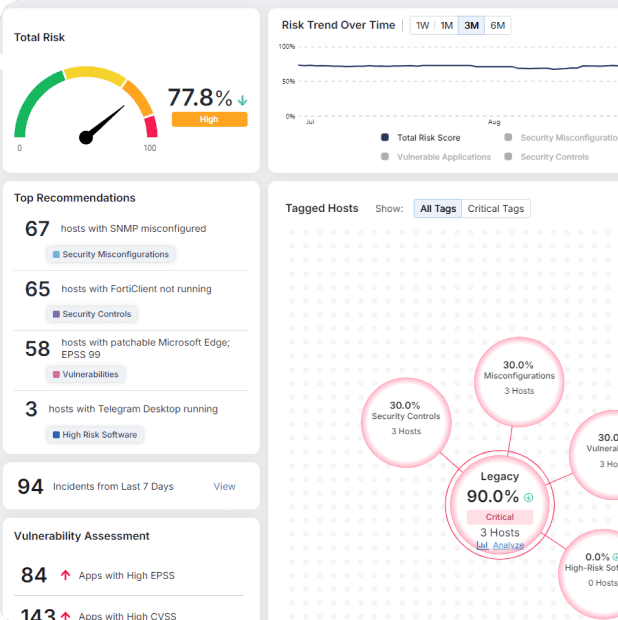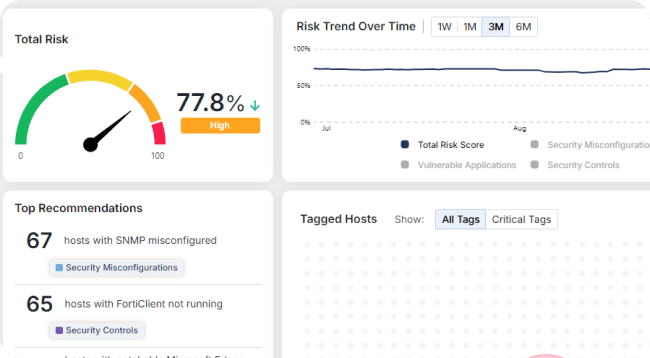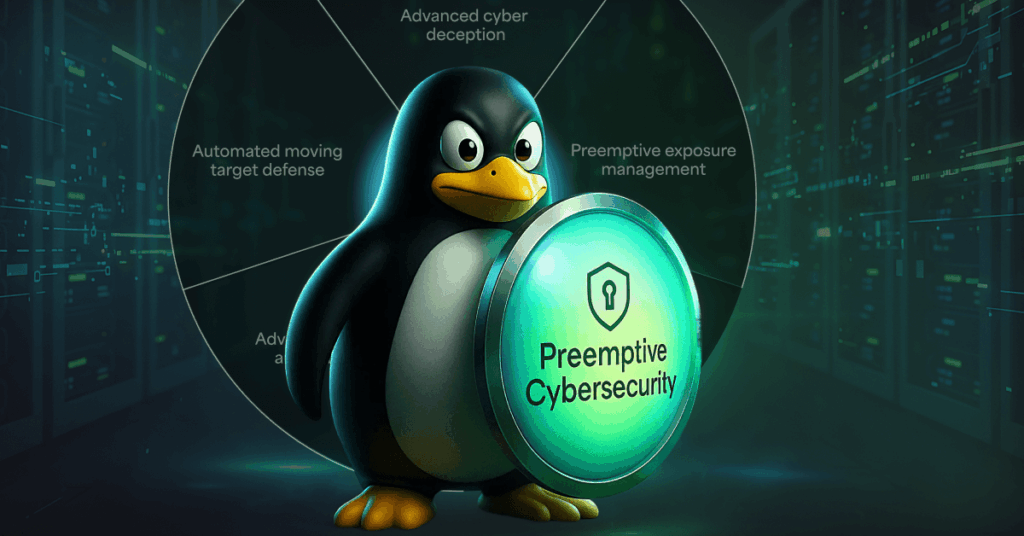Secure the New Attack Frontier—Linux Servers

Not long ago, the term “Linux protection” was closer to an oxymoron than a strategy. For security teams and vendors alike, Linux systems were seen as being either immune to cyber threats or not something threat actors targeted.
This made sense. After all, Linux is open source, and, compared to Windows, its codebase is tiny. Also, thanks to a dedicated fanbase, thousands of eyes are supposed to be constantly finding and removing bugs in every flavor of Linux distribution. All great reasons to put Linux server security on the bottom of any to-do list.
Once considered inherently secure, Linux systems are no longer off hackers’ radar. In fact, ransomware and cryptojacking have become standard tools in cybercriminal arsenals.
Recent findings show at least nine major ransomware families actively targeting Linux environments—among them Linux variants of REvil, BlackMatter, DarkSide, and Defray777, alongside emerging threats like BianLian and BERT.
At the same time, cryptojacking remains a lucrative threat: over 91% of Linux-based cryptomining malware in 2024 leveraged Monero through XMRig libraries, according to Trend Micro Midyear 2024 Threat Report.
The volume is staggering: Palo Alto’s Unit 42 Cloud Threat Report reveals that cloud-based security alerts rose by 388% in 2024, and 70–90% of all cloud compute instances run Linux—making them prime targets for attackers crafting Linux-specific ransomware and malware.
Moreover, cybercriminals are leveraging the ubiquity of Linux in the cloud to distribute ELF-based malware that persists via dynamic linker hijacks and in-memory execution.
The Linux Threat Environment Is Extremely Hostile
Powering most of the world’s largest websites, Linux has never been anything but important. However, since the pandemic shunted white collar workers into home offices, the surge in cloud computing dependency made Linux systems existentially important.
You’ll struggle to meet someone who uses desktop Linux. But every kind of business, organization, or service imaginable now uses Linux to power its cloud servers. At least 90 percent of the cloud runs on some kind of Linux distribution. It’s almost impossible to do anything digitally without interacting with the world’s foremost open-source OS.

Linux servers are now extremely attractive targets. They’re being recruited into botnets, turned into crypto miners, and infected with ransomware strains (e.g. LockBit) designed or adapted specifically for them.
Cybercriminals are riding a new wave of Linux-focused malware, much of which is compiled in the cross-platform Golang coding language. It’s helping make malware increasingly OS-agnostic. The TellYouThePass ransomware strain features 85 percent code similarity between the Windows and Linux versions.
Meanwhile, Linux servers are also being subjected to a barrage of fileless and in-memory attacks. This is a vector existing signature- or behavior-based Linux security solutions can’t easily defend against.
Traditional Security Solutions Are Failing Linux Servers
Linux-powered back-end systems—web servers, databases, and network file shares—need lightweight protection to ensure a smooth and speedy end-user experience. Linux protection must also cover known and unknown vulnerabilities. Open-source software is constantly evolving, making vulnerabilities a fact of life. Even when an organization works hard to find and bridge patch gaps, vulnerabilities will be present.
In this threat landscape, unprotected, exposed Linux servers are vulnerable to attack. Linux servers secured solely with traditional endpoint protection and detection solutions (EPP/EDR), or other poorly adapted defensive technologies, are not much safer. Moreover, these solutions usually use bloated agents that negatively impact server performance.

Security tools built for traditional endpoints are a poor fit for today’s Linux environments. Most organizations still rely on legacy antivirus, file scanners, or EDR solutions originally designed for Windows—retrofitted for Linux with limited effectiveness. But modern Linux workloads, especially in cloud and containerized environments, operate very differently—and attackers know it.
Here’s why traditional defenses fall short:
- Invisible to In-Memory Threats: Most detection-based tools monitor files and known behavioral patterns. They’re blind to fileless ransomware and memory-resident payloads that never touch disk.
- Inconsistent Coverage Across Fragmented Systems: With dozens of Linux distributions and countless custom configurations, achieving consistent visibility is next to impossible. Security gaps emerge quickly—and attackers exploit them.
- Too Heavy for Performance-Critical Environments: Linux workloads often power performance-sensitive applications, cloud services, and connected devices. Traditional security agents introduce latency and resource drag—if they’re even supported at all.
In today’s threat landscape, reacting after an attack has started is no longer good enough. CISOs need a prevention-first approach—one that blocks ransomware and other advanced threats before they have a chance to execute.
Ransomware Can’t Execute What It Can’t Reach
Linux environments demand a fundamentally different approach to ransomware protection—one that doesn’t wait to detect an attack, but prevents it from executing in the first place. That’s exactly where Morphisec’s Anti-Ransomware Assurance Suite delivers.
Purpose-built for Linux and cloud-first infrastructure, Morphisec operates at the point of execution—where threats live—and eliminates them before they ever touch your data.
Here’s how it works:
Intercepts Ransomware at the Earliest Stage
Morphisec’s decoy-based defenses draw ransomware in with high-value lures. The moment ransomware initiates, it exposes itself and is instantly neutralized—no reliance on behavior analysis or signatures required.
Stops Zero-Day and Fileless Threats Cold
Forget chasing IOCs. Morphisec’s memory shielding technology blocks fileless malware and prevents execution entirely, even if attackers use zero-days or polymorphic techniques to evade traditional defenses.
Built to Run Anywhere Linux Lives
Whether you’re protecting virtual machines, Kubernetes clusters, or edge devices, Morphisec is designed for lightweight, low-impact deployment. There’s no scanning, no tuning, and no performance tax—just seamless, deterministic protection.
Automates Response Without Alert Overload
By blocking ransomware before damage is done, Morphisec eliminates the need for manual intervention and reduces investigation and recovery time. No noise. No fatigue. Just resolution.
Delivers Full-Spectrum Ransomware Resilience
When ransomware does impact systems, Morphisec’s Adaptive Recovery steps in. It combines data recovery with forensic-grade recovery, enabling rapid return to operations while preserving vital evidence for compliance and investigation.
It’s Time to Upgrade Your Linux Security Strategy
Linux powers the backbone of your business—but legacy security tools weren’t built to defend it against today’s advanced, evasive ransomware threats. With Morphisec, you get prevention, resilience, and confidence—at the scale your infrastructure demands. Download the Securing Linux Systems Against Emerging and Evasive Ransomware white paper to learn how.
Stay up-to-date
Get the latest resources, news, and threat research delivered to your inbox.




















